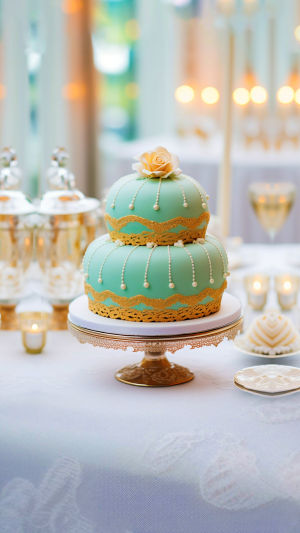Creating a visually stunning cake goes beyond just the flavor; the colors you choose play a pivotal role in the overall aesthetic appeal.
Whether you’re a professional baker or a home enthusiast, understanding how to mix colors for a cake color scheme is essential. Here's a comprehensive guide to help you master the art of color mixing for cakes.
<h3>1. Understanding Color Theory</h3>
Before diving into the practical steps, it’s important to grasp the basics of color theory. The color wheel is a valuable tool that shows primary colors (red, blue, and yellow), secondary colors (green, orange, and purple), and tertiary colors, which are combinations of primary and secondary colors.
- Primary Colors: These are the foundation of all other colors. They cannot be made by mixing other colors together.
- Secondary Colors: These are created by mixing two primary colors. For instance, red and blue make purple, blue and yellow make green, and red and yellow make orange.
- Tertiary Colors: These are made by mixing a primary color with a secondary color, resulting in shades like red-orange or blue-green.
<h3>2. Choosing Your Color Palette</h3>
When planning a cake, consider the occasion and the emotions you want to convey. For example, pastels are perfect for a baby shower, while bold, vibrant colors might be more suitable for a birthday party. Seasonal themes can also guide your palette choices, such as warm tones for autumn or cool hues for winter.
<h3>3. Mixing Colors</h3>
Gel vs. Liquid Food Coloring:
For cake decorating, gel food coloring is preferable over liquid. Gels provide more vibrant colors and require less quantity, which means your icing or batter won’t become too runny.
Start with a Base:
Begin with white icing or fondant. This neutral base allows the added colors to show their true hues.
Add Gradually:
Start with a small amount of coloring and gradually add more. It’s easier to darken a color than to lighten it.
Mix Thoroughly:
Ensure the color is evenly distributed. Inconsistent mixing can result in streaks or uneven coloring.
<h3>4. Creating Custom Colors</h3>
Here are some basic combinations to get you started:
- Purple: Mix red and blue. Adjust the ratio depending on whether you want a more violet (more blue) or magenta (more red) shade.
- Green: Combine blue and yellow. More blue will give you a teal-like color, while more yellow results in a lime shade.
- Orange: Mix red and yellow. For a deeper, burnt orange, add a touch of brown or black.
- Pink: Start with red and gradually add white until the desired shade is achieved.
- Pastels: Mix any color with white to achieve a lighter, softer version of the color.
<h3>5. Achieving Specific Shades</h3>
- Mint Green: Mix green with a hint of blue and white.
- Peach: Combine pink and yellow with a small amount of white.
- Lavender: Mix purple with white.
- Coral: Combine pink and orange.
<h3>6. Testing Your Colors</h3>
Before committing to a large batch, test your colors on a small amount of icing or fondant. This helps ensure you’ve achieved the desired shade and allows for adjustments if necessary.
<h3>7. Working with Multiple Colors</h3>
When using multiple colors, consider how they interact. Complementary colors (opposites on the color wheel, such as blue and orange) create vibrant contrasts, while analogous colors (next to each other on the color wheel, such as blue and green) provide harmonious blends.
<h3>8. Storing Leftover Colors</h3>
Store any leftover colored icing or fondant in airtight containers to prevent them from drying out. Label each container with the color for easy identification later.
<h3>9. Troubleshooting Common Issues</h3>
- Color Bleeding: To avoid colors bleeding into each other, let each color layer dry or set before adding another.
- Achieving Dark Colors: Dark colors like black or navy can be challenging. Start with chocolate icing or fondant as a base, then add the color. This reduces the amount of dye needed and helps achieve a richer color.
<h3>10. Experiment and Have Fun</h3>
The best way to master color mixing is through practice and experimentation. Don’t be afraid to try new combinations and techniques. Over time, you’ll develop an intuitive sense for creating beautiful color schemes that enhance the appeal of your cakes.
Mixing colors for a cake color scheme involves understanding color theory, choosing a suitable palette, and practicing precise mixing techniques. With these tips, you’ll be well on your way to creating visually stunning cakes that are as delightful to look at as they are to eat.





